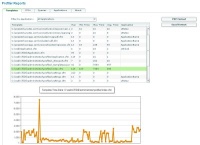Note: This blog post is from 2016. Some content may be outdated--though not necessarily. Same with links and subsequent comments from myself or others. Corrections are welcome, in the comments. And I may revise the content as necessary.
Often in my role as an independent consultant providing
ColdFusion server troubleshooting services, I find myself helping folks determine whether or that a problem is in their database.
And though it may surprise many, I generally do not find the problem to be very often with the SQL they are running. More often it's about configuration issues. For instance, it may be that they have not been keeping their indexes or statistics updated, or it may be that they need indexes that they don't have, or have too many that they don't really need. Or it may be that they have not done any tuning at all and the default settings for their database server are not be well suited to them.
And though such problems are common to any database server (MySQL, Oracle, PostgreSQL, and so on), I find that an awful lot of my clients (for whatever reason) do run on Windows and do use SQL Server (and that doesn't make them stupid or lazy. Different strokes for different folks).
So in this post I want to focus on some SQL Server resources, related to such matters, which I find that I refer folks to often. Some are blog posts, some are code you can run, and some are tools (mostly free).
People using other DBs would do well to read along and could find corresponding resources/tools for the same problems in their respective DB servers.
[....Continue Reading....]








